Amateur television
Amateur radio encompasses a wide variety of modes and innovation. One of these fascinating areas is amateur television which covers all aspects of video production, editing, transmission and reception of television. It has often been at the forefront of the technology developments. Many amateur stations are now transmitting digital pictures (DATV) using the DVB broadcast standards; and using video streaming technologies to exchange pictures with ATV operators around the world.
Radio amateurs have been transmitting and receiving TV pictures for over 60 years. In most cases, simplified versions of the broadcast standards of the day have been used, perhaps tailored to a reduced bandwidth to fit within the amateur bands. All amateur bands above 432 MHz are suitable for amateur TV, along with the experimental NoV bands at 71 MHz and 146 MHz which facilitate DATV innovation at VHF.
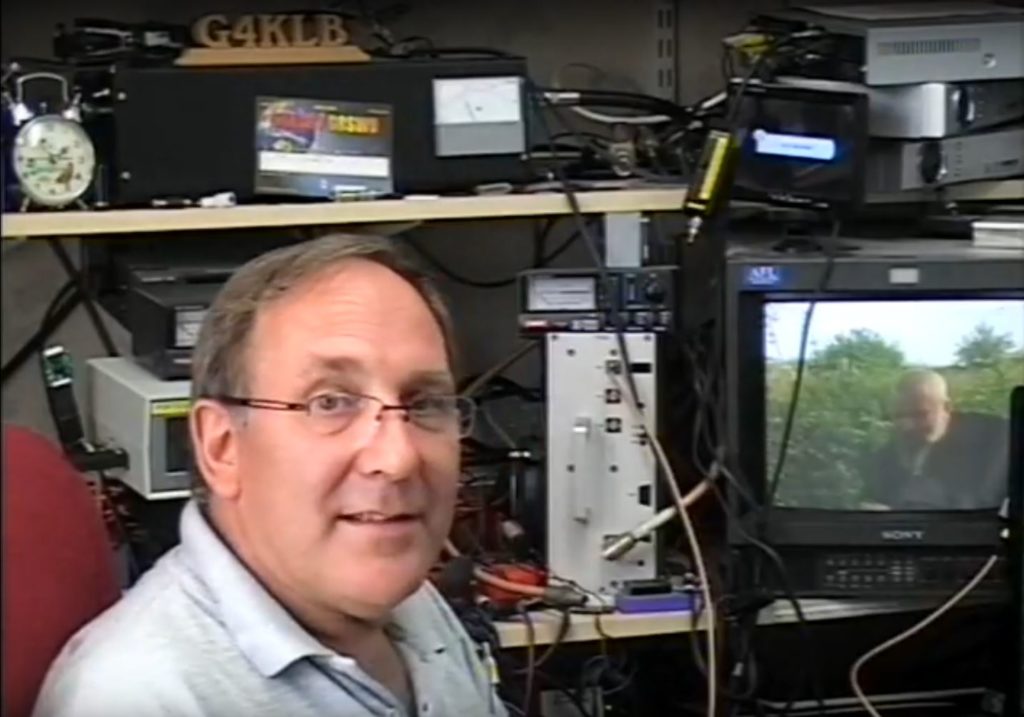 A typical ATV Picture from G4KLB
A typical ATV Picture from G4KLB
Transmission modes
Frequency modulation, as used for early commercial satellite TV transmissions, is still popular, in particular on 5.6 GHz, where re-purposed drone TV transmitters costing less than £20 can be used.
Digital television modes, as used for current commercial satellite TV transmissions, have proved to be very robust and efficient for amateur television transmissions. The DVB-S and DVB-S2 modes are both used and can be generated from software-defined radios driven by user-friendly Linux or Windows computers—including the Raspberry Pi. These transmissions can be received on a domestic satellite TV receiver—with an up-converter or down-converter for bands other than 1296 MHz—or a specialised receiver such as the MiniTiouner.
Amateurs are currently experimenting with reduced bandwidth transmissions in bandwidths as low as 50kHz which can be decoded from weaker signals than the wider bandwidth transmissions. These signals are referred to as Reduced-Bandwidth TV (RB-TV) and typical symbol rates used are 500 KS, 333 KS, 250 KS, 125 KS and 66 KS.
Receiving digital amateur TV
By far the most popular receive system is the MiniTiouner. This uses a satellite TV receiver module with a USB interface to a PC running a specialised DATV reception program written and made available for free use by F6DZP. The MiniTiouner hardware can be self-built or purchased as a pre-assembled unit. The hard-to-purchase components are available from the British Amateur Television Club shop for self-builders and the total parts cost is about £75.
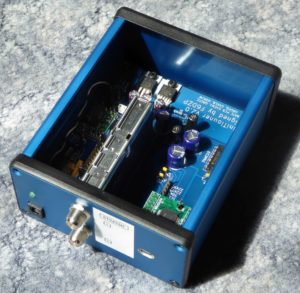 The MiniTiouner Hardware
The MiniTiouner Hardware
The MiniTiouner covers 144 MHz to 2650 MHz and so, with the addition of pre-amplifiers, it will receive on four amateur bands directly and it can be used with down-converters for the other bands.
The MiniTiouner software is designed to run on a Windows 10 PC—although the current versions works satisfactorily with Windows 7.
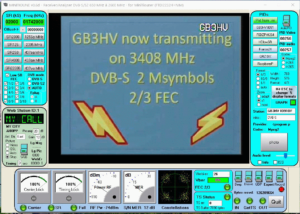
The Comprehensive MiniTioune Software
Transmitting digital amateur TV
The simplest option for transmitting digital ATV is to use the free-to-download DATV Express software with a software defined radio (SDR) such as the Analog Devices Pluto and the LimeSDR Mini. An alternative is to use the BATC Portsdown software on a Raspberry Pi with a LimeSDR Mini. Both of these solutions are broadband allowing the generation of signals anywhere in the frequency range 70 MHz to 3.4 GHz.
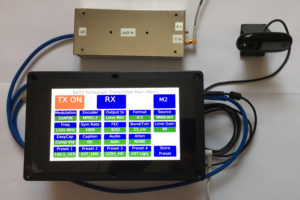 The BATC Portsdown Transmitter and LimeSDR
The BATC Portsdown Transmitter and LimeSDR
The signal from the SDR at about 0 dBm (1 mW) can either be amplified directly in a (very linear) power amplifier, or up-converted to the frequency required. For many microwave operators, existing transverters can be used with minimal modification. The MiniTiouner can be tuned to the normal receive IF, and the transmit signal generated at the same IF.
Operating standards
Commonly used operating frequencies and modes are listed below. Talkback is generally on 144.750 MHz FM or the DXSpot.TV website can be used for chat at longer ranges.
| Freq | Mode | Symbol Rate | FEC | Remarks |
| 71.0 MHz | DVB-S | 333 KS | 7/8 | |
| 146.5 MHz | DVB-S | 333 KS | 7/8 | |
| 437.0 MHz | DVB-S | 1 MS | 1/2 | |
| 1255 MHz | DVB-S | 1 MS | 1/2 | |
| 2395 MHz | DVB-S | 1 MS | 1/2 | |
| 3405 MHz | DVB-S | 1 MS | 1/2 | |
| 5665 MHz | FM | – | – | FM-only activity at present |
| 10367 MHz | DVB-S | 333 KS | 7/8 | |
| 24049 MHz | DVB-S | 333 KS | 7/8 |
Amateur TV by satellite
The launch of Es’hail-2 with its wideband transponder—also referred to as QO-100 or Qatar-OSCAR 100*—has enabled amateur TV the possibility of contacts between stations in the UK and Europe, Africa and parts of Asia and South America. Reception of these transmissions is relatively easy with an 80 cm dish, a commercial LNB and a MiniTiouner.
The QO-100 wideband transponder has downlinks between 10491 MHz and 10498 MHz using horizontal polarisation, and a normal “Universal” LNB converts this down to 741-748 MHz when 18v is supplied to the LNB. This signal can then be directly demodulated by the MiniTiouner system. A good first signal to look for is the beacon on 10492.5 MHz. Once the beacon has been received, other signals found on the BATC/AMSAT-UK online spectrum spectrum monitor can be tuned in.
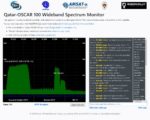 The Online Spectrum Monitor for the Es’hail-2 Wideband Transponder
The Online Spectrum Monitor for the Es’hail-2 Wideband Transponder
The uplink for the wideband transponder is from 2401.5 MHz to 2409.5 MHz Right Hand Circular Polarised. Uplink transmissions should be DVB-S or DVB-S2 at less than 2 MS. Typically 30 W into a 1.2 meter dish is required to uplink a 333 KS digital ATV signal.
Further information
Watch our video introduction to amateur television
Useful ATV links
- Cheap 5.8 GHz Equipment for ATV – RadCom, February 2018
- The British Amateur Television Club (BATC) publishes a quarterly magazine with all the latest ATV news and construction projects. It also maintains a Wiki with lots of useful information, and runs a forum about amateur television.
![]()
*OSCAR – Orbiting Satellite Carrying Amateur Radio










